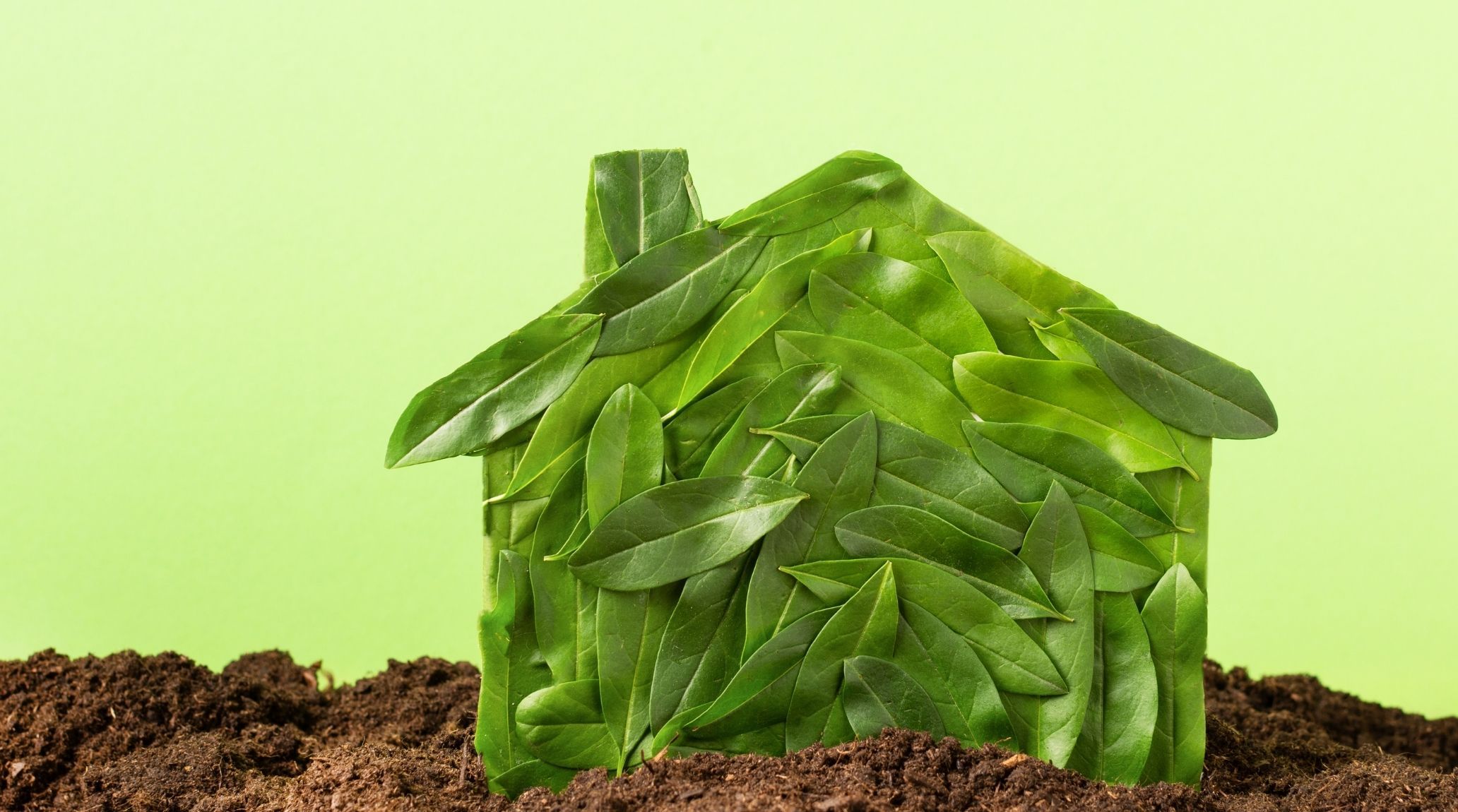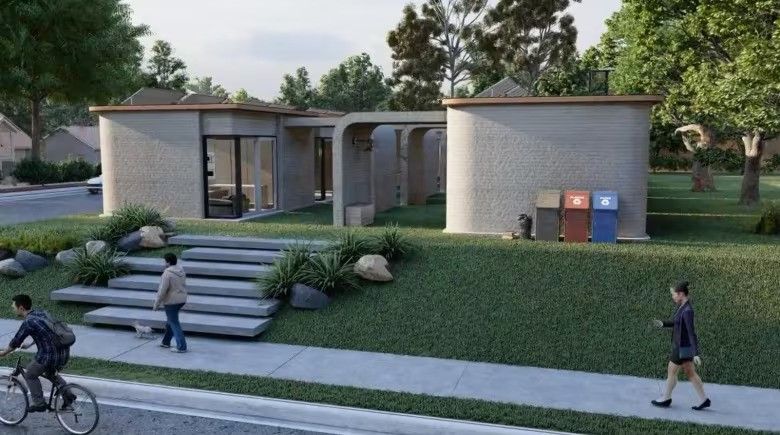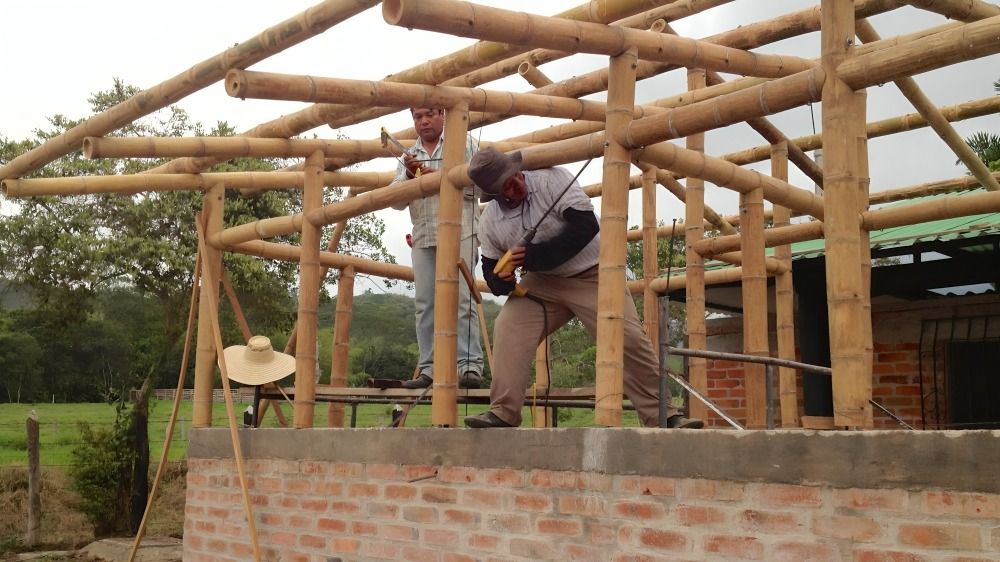
“
When designing green buildings, the use of sustainable and eco-friendly building materials is essential. While many think sustainability simply means recycling, it's actually broader. Sustainable materials must not only be recyclable but also avoid depleting non-renewable resources or harming the environment during production. Embracing these principles helps reduce our carbon footprint and reliance on finite resources, paving the way for more eco-conscious construction practices.1
1
”
Recycled Steel Steel’s durability is unmatched, and recycling it helps preserve resources. By reusing reclaimed steel, we cut down on energy use and pollution, making it a sustainable choice for construction. 1
Hempcrete combines hemp stalks with lime and water to create a super-insulating, fire-resistant material. Not only is it eco-friendly, but it also helps keep homes warm and cozy. Hempcrete has a concrete-like shape and strength, with a much lighter weight. 2
Using reclaimed wood from old buildings reduces the need for new timber and prevents deforestation. The world’s tallest building made from reclaimed wood, the T3 building in Minneapolis, stands at 180 feet tall. 3
Plastic waste can be turned into durable building bricks. The innovative company EcoBlock has developed bricks made from 100% recycled plastic, with their construction being both sustainable and resistant to water and fire. 4

Mycelium Imagine building with fungi! Mycelium, the root-like fibers of mushrooms. Mycelium, when dried, becomes an eco-friendly building material with impressive properties and offers a biodegradable, fire-resistant, and lightweight alternative to traditional construction materials.
Solar tiles integrate photovoltaic cells into roofing materials. Tesla’s Solar Roof is one of the most well-known products, blending seamlessly with traditional roofing while generating renewable energy.5
Recycled Glass Transforming old bottles into new materials, recycled glass is not just stylish but also sturdy. It’s perfect for countertops and flooring, offering both durability and a lower environmental impact. 6
Straw Bale Straw bales are more than farm leftovers—they form highly insulated walls for energy-efficient buildings. Ideal for passive solar designs, straw bale construction is both eco-friendly and effective.7
Biocomposite Cement Crafted from algae, biocomposite cement represents the future of low-carbon construction. It mimics the properties of traditional cement while significantly reducing environmental impact. 8
Innovations like autonomous 3D-printed homes use sustainable materials and reduce waste. The world’s first 3D-printed house, completed in 2018, was built with eco-friendly concrete and demonstrates the potential of this technology. 9
Mud bricks, made from local earth and sometimes mixed with straw, are a sustainable option that minimizes transportation and resource use. They offer excellent thermal mass for hot climates.10
Insulation made from natural fibers like sheep’s wool or recycled denim is eco-friendly and biodegradable. The largest project using sheep’s wool insulation is the Grange Hotel in England.11
Innovations like CarbonCure inject CO2 into concrete to reduce its carbon footprint. The world's first carbon-negative concrete block was developed by CarbonCure Technologies, aiming to lower construction emissions.12
Earth Blocks Compressed earth blocks are made from soil and used to build durable, energy-efficient walls. Their excellent thermal mass makes them perfect for sustainable construction.13

Did you know? Bamboo, a super-fast-growing grass that grows 1.5 inches daily, is a renewable building material. It reaches full maturity in just three to five years, providing a lightweight, strong, and flexible option for sustainable building.
Earthships are self-sustaining buildings made from recycled and natural materials. The largest Earthship community, Earthship Biotecture in New Mexico, comprises dozens of self-sufficient homes built with recycled materials.14
Plant-Based Polyurethane Rigid Foam Plant-based foam, derived from hemp and bamboo, offers superior insulation. It’s a green alternative to fiberglass, providing both resilience and environmental benefits.15
Enviroboard combines magnesium, sawdust, and fiber cloth to create a fire-resistant, eco-friendly board. It’s stronger and more resistant to water than traditional boards, thanks to its green manufacturing process.16
Laminated Timber Laminated timber, or mass timber, is a prefabricated material with impressive strength and water resistance. It’s a sustainable substitute for steel and concrete, significantly reducing carbon footprints.17
Cork is harvested from the bark of cork oak trees without harming them. The world’s largest cork building is the Pavilhão de Portugal in Lisbon, which demonstrates the material's sustainability and insulating properties.18


